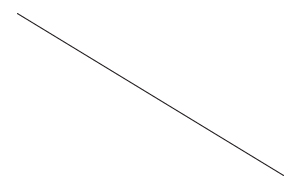Recommended Fall Reading: Architecture Books

Fall has quickly come and winter is feeling closer than ever. The ideal Sunday afternoon would be to sit back with a bear mug of coffee and flip through some good inspiration. I’ve taken hints from colleagues and professors in the department and compiled a list of recommended books and magazines that promise informative and engaging architecture.
Here are some starters:
Mark Magazine
#28: Featuring Wurm + Wurm, Remco Siebring, Sou Fujimoto, and many more.
BLDGBLOG, Geoff Manaugh
The BLDGBLOG website began in 2004 and continues to publish stories and speculate about how humans have shaped and will continue to shape their environment. The site provides intriguing details from the fringes of contemporary architectural practice in an accessible thought-provoking and highly entertaining manner. Here author Geoff Manaugh presents his insights in book form combining history urban exploration science fiction design climate change and city planning with the view that everything is relevant to architecture.
Delirious New York: A Retroactive Manifestro for Manhattan, Rem Koolhaas
Dutch architect Rem Koolhaas, founder of the Office for Metropolitan Architecture (O.M.A.), both analyzes and celebrates New York City. He suggests the city as a place for limitless kinds of actions, happenings, which essentially makes up the metropolitan lifestyle. This book is filled with photographs, postcards, maps, and drawings that enhance Koolhaas’ exploration.
“Manhattan”, Koolhaas writes, “is the 20th century’s Rosetta stone … occupied by architectural mutations (Central Park, the Skyscraper), utopian fragments (Rockefeller Center, the U.N. Building), and irrational phenomena (Radio City Music Hall).”
Terror and Wonder: Architecture in a Tumultuous Age, Blair Kamin
Blair Kamin, a Pulitzer Prize-winning architecture critic for the Chicago Tribune, writer of his famous Cityscapes blog, is also the author of this recent book. Terror and Wonder gathers the best of Kamin’s writings from the past decade along with new reflections on an era beginning with the destruction of the World Trade Center until the opening of the world’s tallest skyscraper. He discusses the tragic consequences of 9/11, Hurricane Katrina, the boom and bust of real estate and how architecture has been central to all of these life-changing events.
Key figures including Frank Gehry, Daniel Libeskind, Barack Obama, Renzo Piano, and Donald Trump carry out roles in the unexpected and amazing ways that architecture mirrors our values—and shapes our everyday lives.
The Death and Life of Great American Cities, Jane Jacobs
This hugely influential book is a critique of modernist urban planning policies in the 20th century. It was originally published in 1961 and Jacobs made a statement claiming that the planning strategies were destroying existing inner-city neighborhoods and degrading the lives of many individuals.
Design Like You Give a Damn: Architectural Responses to Humanitarian Crises, Architecture for Humanity, Edited by Kate Stohr and Cameron Sinclair
Edited by Architecture for Humanity, Design Like You Give a Damn is a compendium of innovative projects from around the world that demonstrate the power of design to improve lives. The first book to bring the best of humanitarian architecture and design to the printed page, Design Like You Give a Damn offers a history of the movement toward socially conscious design and showcases more than 80 contemporary solutions to such urgent needs as basic shelter, health care, education, and access to clean water, energy, and sanitation. Featured projects include some sponsored by Architecture for Humanity as well as many others undertaken independently, often against great odds.
S M L XL, Rem Koolhaas, Bruce Mau, Hans Werlemann
One of the first of its kind, this 1376-page-long book is a collection of essays, diary excerpts, travelogues, photographs, architectural plans and sketches, and cartoons produced by Office for Metropolitan Architecture (O.M.A.) in the past twenty years.
Sustainable Design: Ecology, Architecture, and Planning, Daniel E. Williams
In this book, Daniel Williams challenges professionals to rethink architecture and to see their projects not as objects but as pieces that make up a whole. He articulates the importance of this as it is essential to human health as well as to regional economy and ecology. Williams’ book features winning projects from the first decade of the AIA’s Committee on the Environment (COTE) Top Ten award program.
Hybrids III, a+ t
This is the last one in the Hybrids series, covering residential mixed-use buildings. The book starts with a brief comparison between hybrid buildings and social condenser built during 1945-1975 to introduce the subject, like the John Hancock Center in Chicago by SOM or the Unite d’Habitation in France by Le Corbusier. After this historic context, there is a good selection 0f 20 contemporary residential mixed-use buildings, such as the Sky Village by ADEPT + MVRDV, the St Jakob Turm by Herzog & de Meuron, the Market Hall by MVRDV (under construction), the Porta Fira Towers by Toyo Ito + b720, the Beekman tower by Frank Ghery, De Rotterdam by OMA (under construction), the Aqua Tower by Studio Gang and more.
The editorial seems to work very close to the offices, as the detail of the projects are amazing: detailed drawings, large photos, good diagrams, size comparisons, and all the facts you need to completely understand the projects.
Joan Kim is a senior in BFA Interior Design, graduating in spring 2011.